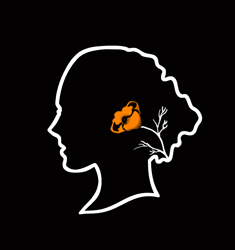Samala Chumash Siblings, Santa Ynez Valley
"Now we can give back."
Portrait of Mike Lopez, oil on canvas, 36x36
Portrait of Kathleen Marshall, oil on canvas, 36x36
“In our native language, we are called Samala.” The Santa Ynez Valley is home to the Samala people, historically known as the Ineseño Chumash. Siblings Kathleen Marshall and Mike Lopez are leaders in the Samala community. In their personal stories, we can glimpse the development of the modern Samala in terms of economic prosperity and cultural renewal. Kathleen is a gaming commissioner and a credentialed teacher of the Samala language -- she carries the stories and traditions that are central to Samala history and identity. Her brother Mike serves as a business committee member.
Their family has always been part of the Santa Ynez Valley. Their ancestral villages include Kalawshaq, which was located near the current reservation, and Soxtonokmu, on Figueroa Mountain. Their great-great-great-great grandmother was Maria Solares, who worked with anthropologist J.P. Harrington to record the Samala language, including many stories and the names of village sites.
The stories many of us tell may be meaningful to our friends, and perhaps to our children. It is inspiring to think that the stories and language of Maria Solares, recorded so long ago, continue to resonate in the community of her descendents.
Kathleen and Mike have warm memories of visiting their grandfather's house on the Santa Ynez Chumash reservation. "We were here all the time; we'd play in the riverbed and eat meals together." They participated in many cultural events at the old tribal hall and made frequent field trips to Zaca Lake, a place that is central to many Chumash stories.
"Our house was built next to my grandfather's house." Kathleen and Mike were raised on the reservation during the 1970s. Their memories include challenges as well. Like other families on the reservation, they experienced poverty and racial discrimination.
During the course of the 19th and 20th centuries, the Samala language was nearly lost. Natives were told to assimilate, to fit in, not only by outsiders but often by their own family members. Many natives were sent to boarding schools where they were forbidden speak their own languages. With cultural renewal movements in the 1960s to regain tribal rights, many Indian communities made inroads into improving conditions for their communities. In today’s generation, appreciation of cultural diversity continues to increase, but there is still a lot of education that needs to take place.
For the Samala people, economic conditions improved with the Indian Gaming Regulatory Act of 1988, which recognized tribal sovereignty and allowed gaming on federally recognized reservations. The Chumash Casino was established in 1994, and expanded into a new facility with an entertainment complex in 2003. Resort operations also include the Hotel Corque and several restaurants. Revenue generated from the casino and related enterprises has helped the Samala people grow their business interests, and in turn they are also able to give back to the community.
“We’re an economic leader; we give to places that helped us, now we help them,” Mike observes. The tribe supports dozens of causes in the community including Cottage Hospital and the Unity Shoppe. Gaming revenue also helps to support education efforts, including Kathleen’s work to sustain traditional culture.
Kathleen has studied the Samala language and is now credentialed to teach the language. “A group of us began working with linguist Dr. Richard Applegate several years ago. He helped us to learn our language.” In turn, Kathleen is bringing the language and traditions to a new generation, and uses Samala with her own children at meals.
“We also have Camp Kalawshaq which is held every summer for tribal children. The tribe holds language and culture classes for their youth twice a week.” Kathleen enjoys teaching non-native kids too, “Some of them think we live in teepees.” She also serves on the museum advisory committee. The tribe is in the process of designing a museum to share their culture.
Cultural pride extends to community events and ceremonies. The tribe sponsors an inter-tribal pow-wow each year, which is attended by Indians and others from all over the country, and Chumash Culture Days, which provides an opportunity for Santa Barbara area neighbors to become more familiar with the Chumash and other California natives. Among the highlights of the year are preparations for the tomol crossing; the rowing of a traditional plank canoe to Santa Cruz Island.
“We’re a big family; some people are involved in education, business, investments…,” shares Mike. There is also an environmental and sustainability council. When asked what is unique about their community, Kathleen and Mike both mention the land. Zanja de Cota Creek runs through the middle of the reservation and is a constant reminder of their connection to the land. At the head of the creek is a spring near which the old village was located; it is called Kasaqunpeq’en (where it stops).
Chumash heritage today includes the legacies that people like Kathleen and Mike are building, from the classroom to the boardroom. Kathleen and Mike are representative of the modern Samala. They are each working hard to ensure the economic vitality of their community and the continuity of Samala traditions.




